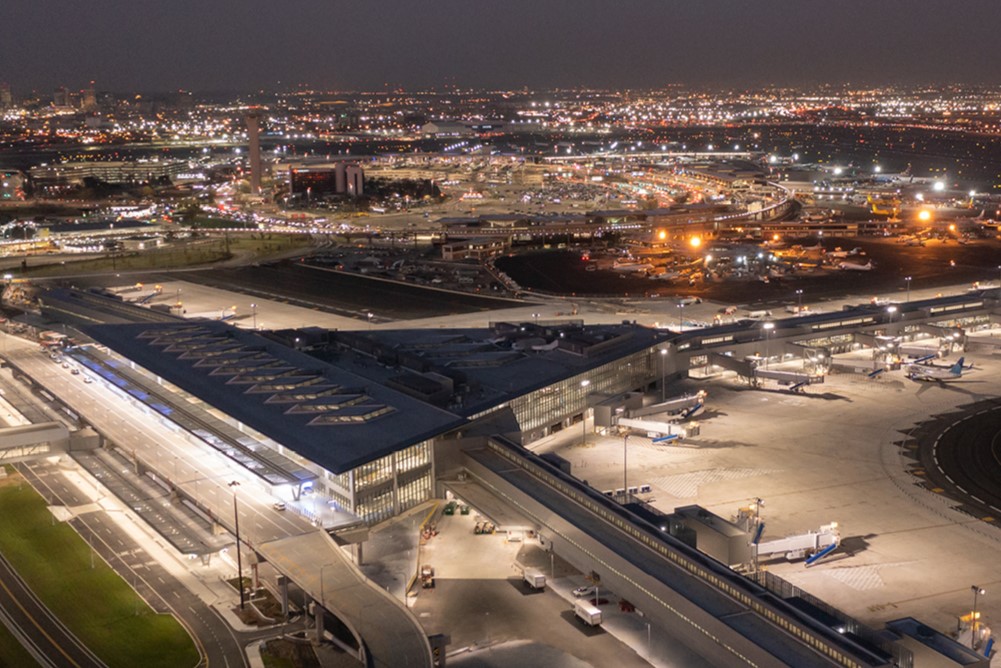The Port Authority of New York and New Jersey announced that Newark Liberty International Airport’s new Terminal A has received Leadership in Energy and Environmental Design (LEED) Gold certification from the U.S. Green Building Council (USGBC). The sustainability achievement aligns with the port authority’s agency-wide goal to reach net-zero carbon emissions.

Following a $2.7 billion project to replace the outmoded Terminal A opened in 1973, the new state-of-the-art terminal was completed in January 2023. The USGBC’s LEED certification is among the most widely used green-building rating systems in the world and an international symbol of environmental responsibility. Following stringent requirements, Newark Liberty’s Terminal A met specific benchmarks for energy efficiency, water conservation, site selection, material selection, and waste reduction.
Specifically, the 1 million-square-foot Terminal A features a variety of sustainable design elements, including the largest solar rooftop installation at any U.S. airport atop the terminal’s parking deck; new electric buses to support shuttle operations; water-efficient fixtures reducing potable water demand by more than 45%; a cool roof designed to reflect sunlight, absorbing less solar energy and reducing the heat gain on the building; and energy-efficient indoor lighting and controls. In achieving LEED Gold, the project meets the port authority’s goals to reduce greenhouse gas emissions by reducing annual energy costs by an estimated 30%.
Newark Liberty is also providing charging and electrical infrastructure to enable airlines’ transition to electric ground-support equipment (GSE) across the terminal. The port authority’s 2022 Zero Emission Airside Vehicle Rule mandates the conversion of all GSE to electric models by 2030 where commercially available.
In accordance with the port authority’s climate resilience design guidelines, Terminal A was also designed to withstand today’s 100-year flood projections plus projected future sea level rise.

The terminal’s LEED Gold certification comes shortly after the port authority unveiled its Net-Zero Roadmap, a comprehensive agency-wide plan comprised of more than 40 concrete actions that will guide the agency’s efforts in meeting its goal of net-zero carbon emissions by 2050, as well as interim goals of a 35% reduction in direct emissions by 2025 and a 50% reduction by 2030.
“As the port authority drives $30 billion in airport redevelopment projects, we are ensuring that we take a sustainable, resilient, and equitable approach to the planning, design, and construction of our facilities,” said Port Authority Executive Director Rick Cotton. “We all have a role to play to tackle the existential threat of climate change, and this certification shows the port authority is committed to be in the front rank of sustainability initiatives.”
